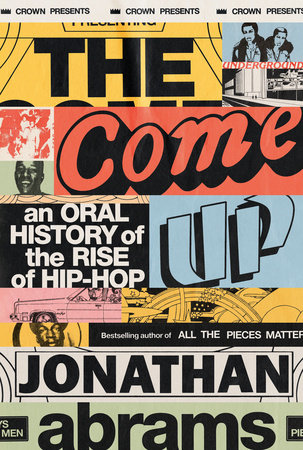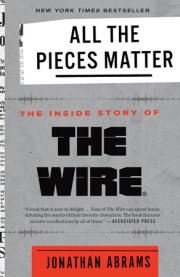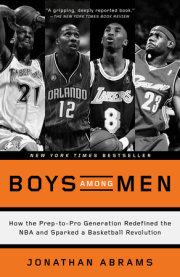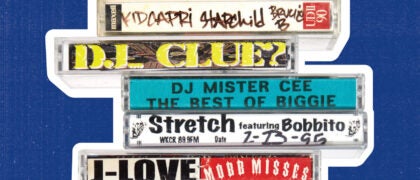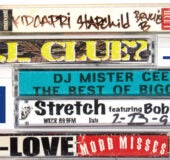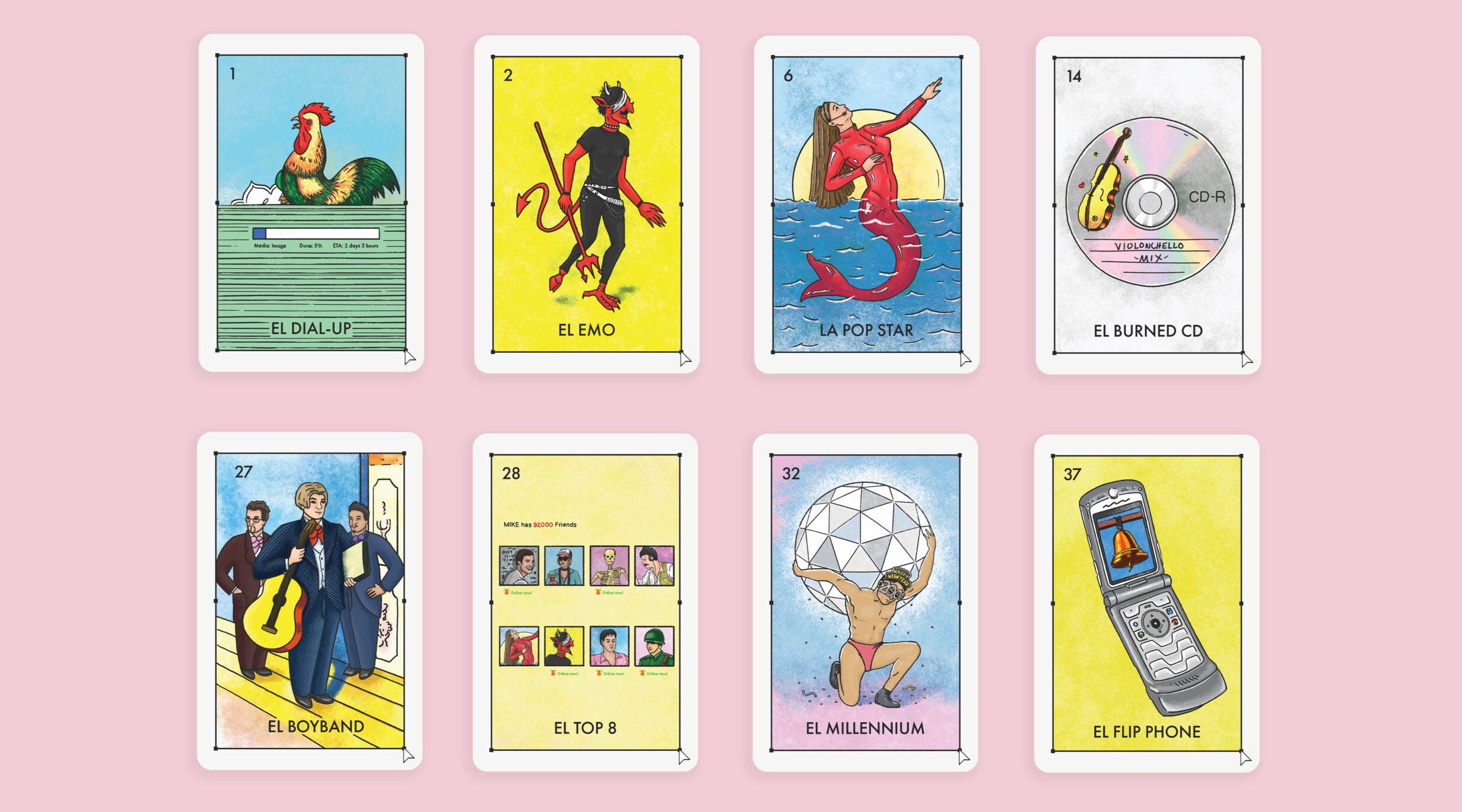Lemonade from Lemons
Bronx, New York
1973–1979Clive Campbell migrated as a child with his family from Jamaica to the United States in the late 1960s, leaving one country roiled by political instability for another. In Kingston, Campbell had become infatuated with the reggae and dub music that blared from giant portable sound systems, and DJs who toasted or talked over instrumental tracks. Campbell arrived in the Bronx during the reign of feel-good disco music, which intersected with the civil rights era and the dire financial straits of a New York City that was facing a declining population and labor unrest. Campbell involved himself in the city’s emerging graffiti scene—which had arrived after originating in Philadelphia—and assumed the tag name Kool Herc.
On August 11, 1973, Campbell hosted a back-to-school fundraising party for his sister, Cindy, at 1520 Sedgwick Avenue in the West Bronx—and he is widely credited with birthing hip-hop on that day. By then, the teenaged Campbell had assembled his own massive sound system, along with an eclectic record collection that included selections from James Brown and the Incredible Bongo Band. At the party, before an appreciative audience of neighborhood teenagers, DJ Kool Herc performed his “Merry-Go-Round” technique of isolating and prolonging the breakbeat sections of songs (the drum patterns used in interludes—breaks—between sections of melody) by switching between two record players.
DJ Kool Herc became a folk hero in the Bronx as his parties attracted larger and larger crowds. He hosted popular block parties and created Kool Herc & the Herculoids with Clark Kent. Acrobatic dancers known as b-boys, b-girls, and breakers (the media eventually labeled them as breakdancers, a term still in wide circulation today) flocked to DJ Kool Herc’s parties to compete in dance circles—no longer having to wait out lengthy songs for a brief moment to get down. DJ Kool Herc enlisted the help of his friend Coke La Rock, regarded as hip-hop’s first MC, as La Rock adapted toasting by shouting out the names of friends and encouraging partygoers to dance.
In time, Afrika Bambaataa and Grandmaster Flash joined DJ Kool Herc as Bronx DJs who forged groundbreaking contributions and laid the foundation for hip-hop to flourish, spread, and evolve.
DJ Charlie Chase (Cold Crush Brothers): The Bronx [in the late 1960s and ’70s] was the epicenter for poverty, the epicenter for kids who were full of energy, who didn’t know what to do with it, didn’t have a lot of activities, didn’t have role models.
MC Debbie D (artist): The backdrop to the South Bronx is poverty-stricken—crime, gangs, slumlords, abandoned buildings everywhere. So they had coined the Bronx “The Bronx Is Burning.” And they wasn’t putting money into safe havens for young people. So, with the music outside, you went to a jam, there’s a thousand kids standing there. We ain’t got nothing else to do.
Easy A.D. (Cold Crush Brothers): We were creating something that took up our time and made us feel good and brought us together. You have to imagine walking out your house every day and seeing abandoned cars burnt up, empty buildings, and you’re going to elementary school.
Michael Holman (journalist): A lot of young people are going downtown to see major live acts like [Patti] LaBelle, James Brown, Funkadelic, as well as going to the famous discos, wearing their best clothes, doing the latest dances, and leaving those young punks and all the troubles in the neighborhood behind. What’s left behind is an audience of younger people, teenagers who can do all the dances—hell, sometimes they’re the originators and are the best dancers.
Kurtis Blow (artist, producer): A big part of hip-hop is breakdancing, b-boying. The dance was around before hip-hop, the actual dance style was developed from playing soul music and that playlist that [Kool Herc used].
Grandmaster Caz (Cold Crush Brothers): Herc was a mythical figure in the neighborhood. You heard about him before you saw him.
Sadat X (artist, Brand Nubian): I remember Herc being this larger-than-life figure, just muscles, with the glasses on. Herc was the commander, putting people in place.
MC Debbie D (artist): When Kool Herc comes out and he starts playing music and then other notable DJs get involved—[Afrika] Bambaataa, [Grandmaster] Flash, L Brothers—and they start playing their music. We’re all going to the jams.
Kurtis Blow (artist, producer): He played the music that we wanted to hear. There was a special playlist of b-boy songs, breakdance songs— I can rename right now about ten of them: “Give It Up or Turnit a Loose” by James Brown, “Get Into Something” by the Isley Brothers, “Listen to Me” by Baby Huey, “Melting Pot” by Booker T. & the M.G.’s. You got “Scorpio” by Dennis Coffey and the Detroit Guitar Band. “Shaft in Africa.” “Apache” by Michael Viner’s Incredible Bongo Band. A couple more James Brown songs you can put in there like “Soul Power” and “Sex Machine” and “Escapism,” “Make It Funky”—songs like that.
When you playing these songs, this is the time for the b-boys to do their thing, to create circles of people around them. People were competing inside that circle, they were doing acrobatics and flips and twists and all kinds of routines, and going down to the floor doing the splits like James Brown, doing footwork, like the best dancers I’ve ever seen.
So that was a typical Kool Herc party, and the music was incredible. And of course, he was on the microphone with an echo chamber, “Young ladies, don’t hurt nobody-body-body. It’s Kool Herc-Herc-Herc. Herculoids-loids-loids. Going down to the last stop-stop-stop-stop.” It was mystical and magical at the same time. It was disco, but it was ghetto disco.
Rahiem (Grandmaster Flash and the Furious Five): It was his playlist that all of the other DJs who aspired to reach his level at the time in the Bronx played. That was Kool Herc’s contribution to hip-hop, his playlist.
What would become known as hip-hop sprang from a foundation of DJs with powerful sound systems who operated around the same time as DJ Kool Herc in the early 1970s. Disco King Mario, who lived one floor above Paradise Gray, who would himself go on to help create X Clan, in the Bronxdale Houses projects, threw some of hip-hop’s earliest jams with his Chuck Chuck City crew. Disco King Mario and Afrika Bambaataa were both members of the Black Spades gang, and Mario lent equipment for some of Bambaataa’s earliest sets.
Pete DJ Jones, a transplant from North Carolina, was popular in Manhattan club circles. He was the first DJ who many, including Kurtis Blow, ever witnessed working two turntables and duplicate copies of the same record, which become the foundation for DJing, extending the breaks of funk and soul songs. Pete DJ Jones also served as a mentor to Grandmaster Flash.
Brooklyn’s Grandmaster Flowers is recognized as one of the earliest pioneers of hip-hop for mixing funk and disco records in sequence and throwing massive block parties. Flowers even opened for James Brown at Yankee Stadium in 1969.
They joined others, like Maboya and DJ Plummer, in laying a blueprint for hip-hop to emerge, but never reaping the attention, adulation, or financial windfall that followed.
Daddy-O (artist, producer, Stetsasonic): I think sometimes people think that the first time that equipment came out and people plugged into the streetlamps, it was hip-hop. That’s not true. The first time you’d seen the sound systems, it was people playing disco: Grandmaster Flowers, my boy Pete DJ Jones. And it was the reggae guys that was playing all the Lone Ranger stuff, the Sly & Robbie stuff, Bob Marley and the Wailers. Those were the first sound systems you saw on the street, was disco and reggae sound systems.
Paradise Gray (manager of the Latin Quarter, X Clan): I call my mother the Mother of Hip-Hop, because my first crate of records came from my living room. She was the one that introduced me to George Clinton, James Brown, Maceo [Parker], Bootsy [Collins], Sly and the Family Stone. So, a bunch of the breakbeats. When I finally heard Herc and Flowers and Bam and all of these guys playing the breakbeats, I had a whole bunch of those records already.
DJ Mister Cee (producer): That was the time when a lot of DJs was getting into the craft of DJing and buying them big kick-ass speakers—and I’m saying “kick-ass” because there used to be a sticker on the speaker that said “Kick Ass.” That was around that time that DJs would play outside and break into a lamppost. Nowadays, there’s an outlet in there. Back then, we would break into the lamppost and splice the wires up and connect to an extension cord. That’s how we would power up.
Copyright © 2022 by Jonathan Abrams. All rights reserved. No part of this excerpt may be reproduced or reprinted without permission in writing from the publisher.





